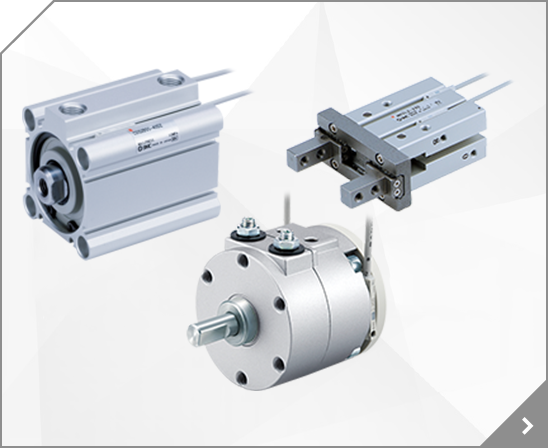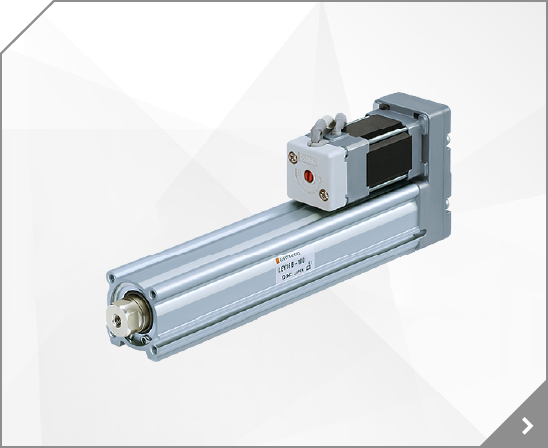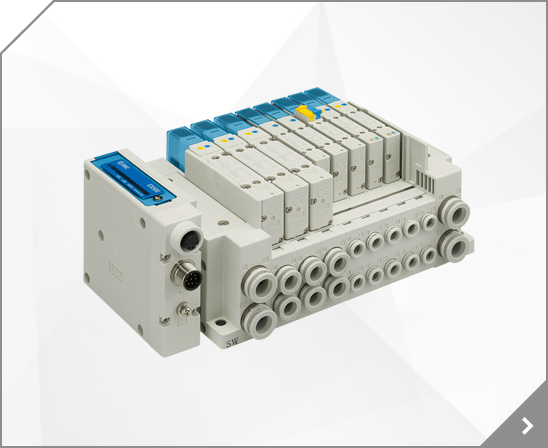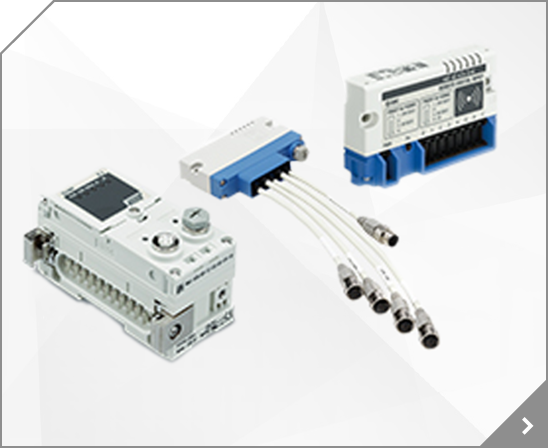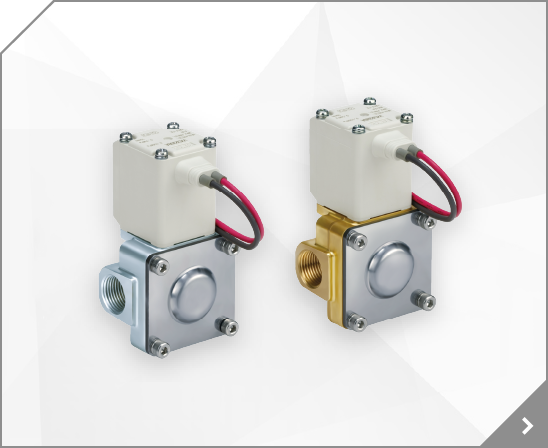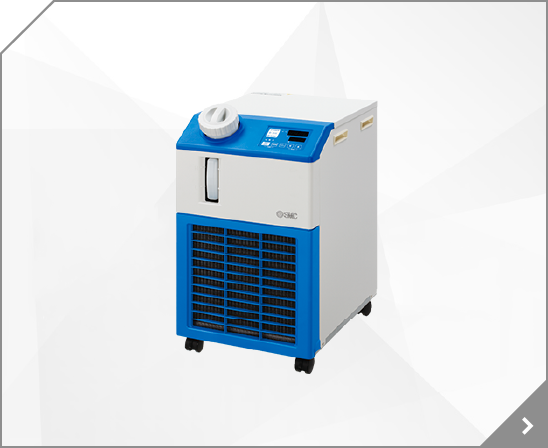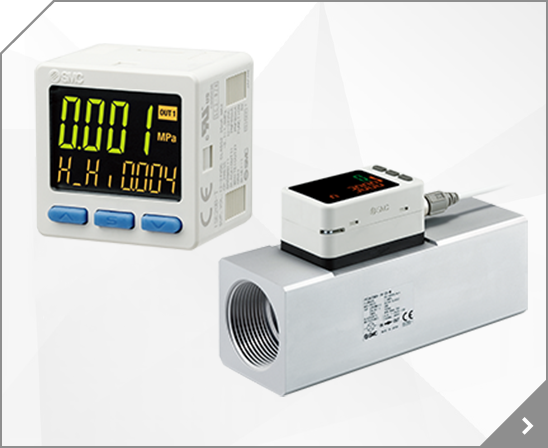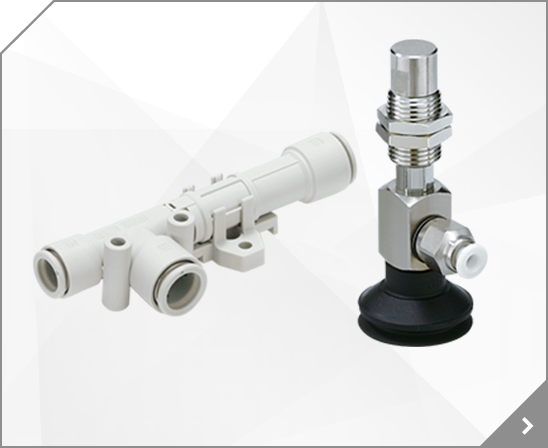
③ The max. operating pressure differential or other solenoid specifications do not satisfy the customer’s operating conditions.
We do not know which manufacturers sell energy-saving drivers as units.
You will likely be asked to create a circuit. If this proves too difficult, consider the 4 W type (can be continuously energized) or the 10 W type (can be energized for up to 1 s) that can be used without an energy-saving driver.
The SX10 series catalog can be found
https://www.smcpneumatics.com/Part-Builder-Links_ep_2458-1.html?https://smccatalog.partbuilder.smcpneumatics.com/support/faq/en-jp/?ca_id=fluid-process-valves&fa_id=11129
VNC, VNH, SGC, and SGH series valves do not support the use of water or pure water. Water or pure water may cause the inside of the body to rust, resulting in failure.
Coolant contains anticorrosive agents and is used to prevent rust.
The coolant valves are therefore designed to be used with coolant only.
Do not block the other pilot port because it is used as a breathing hole.
As for the double acting type, it is switched by the ON/OFF of both the PA and PB ports.
The process pumps themselves do not have a flow adjustment function.
Follow the procedure below to adjust the flow rate.
For the automatically operated type
Install a needle valve or other flow adjustment valve on the outlet side of the process pump to adjust the flow rate.
Since HRS series thermo-chillers do not have a built-in flow meter, the flow rate cannot be controlled.
However, by mounting an external adjustment valve on the thermo-chiller, manual adjustment is possible by the user.
When adjusting (restricting) the circulating fluid flow rate externally, pay attention to the min. required flow rate.
All the customer needs to do is leave the source plug fully open and turn ON (start) the thermo-chiller. Unless an alarm is generated, the device can be safely left to operate.
Note) The water-regulating valve of HRS□-W water-cooled thermo-chillers opens and closes depending on the state of the circulating fluid.
Do not apply the starting voltage for more than 0.3 s. Heating the coil may burn it out.
Please check the figure below. If the product is equipped with a control power supply, this control power supply circuit is provided.
If the operating power supply voltage is energized while the valve is open, it is acceptable not to drop it to the holding voltage.
Function: 1 (2 Position Single), Piping: 2 (Body Ported), Exhaust: 3 (Common), Specifications: Standard, Voltage: 5 (24VDC), Lead Wire: DO (DIN Terminal w/o Connector), Surge Suppressor: None, Manual Override: Non-locking Push Style, Port Size: C8 (ø8 One-touch Fitting), Thread: F (G), Option: None, CE Compliant: Q (CE Compliant)
Type of Actuation: 1 (2 Position Single), Manifold Type: 40 (Base Mounted Non Plug-in Single/Stacking Base, Plug-in Stacking Base), Pilot: Internal Pilot, Specifications: Standard, Voltage: 5 (24VDC), Electrical Entry: DO (DIN Terminal without Connector), Lead Wire Length: None, Surge Suppressor: None, Manual Override: Non-locking Push Style, A, B Port Size: 01 (Base Mounted w/Sub-plate 1
Type of Actuation: 2 (2 Position Double), Manifold Type: 40 (Base Mounted Non Plug-in Single/Stacking Base, Plug-in Stacking Base), Pilot: Internal Pilot, Specifications: Standard, Voltage: 5 (24VDC), Electrical Entry: DO (DIN Terminal without Connector), Lead Wire Length: None, Surge Suppressor: None, Manual Override: Non-locking Push Style, A, B Port Size: 01 (Base Mounted w/Sub-plate 1
Type of Actuation: 1 (2 Position Single), Manifold Type: 40 (Base Mounted Non Plug-in Single/Stacking Base, Plug-in Stacking Base), Pilot: Internal Pilot, Specifications: Standard, Voltage: 5 (24VDC), Electrical Entry: DO (DIN Terminal without Connector), Lead Wire Length: None, Surge Suppressor: None, Manual Override: Non-locking Push Style, A, B Port Size: 01 (Base Mounted w/Sub-plate 1
Solenoid: 1 (Single Solenoid), Voltage: 3 (110 to 120 VAC, 50/60 Hz), Electrical Entry: DO (DIN Terminal w/o Connector), Light/Surge Voltage Suppressor: None, Manual Override/Classification: Non-locking Push Style (Flush), Thread: F (G)
Solenoid: 2 (Double Solenoid), Voltage: 3 (110 to 120 VAC, 50/60 Hz), Electrical Entry: DO (DIN Terminal w/o Connector), Light/Surge Voltage Suppressor: None, Manual Override/Classification: Non-locking Push Style (Flush), Thread: F (G)
Solenoid: 1 (Single Solenoid), Voltage: 6 (12 VDC), Electrical Entry: DO (DIN Terminal w/o Connector), Light/Surge Voltage Suppressor: Z (with Light/Surge Voltage Suppressor), Manual Override/Classification: Non-locking Push Style (Flush)
Solenoid: 1 (Single Solenoid), Voltage: 5 (24 VDC), Electrical Entry: DO (DIN Terminal w/o Connector), Light/Surge Voltage Suppressor: Z (with Light/Surge Voltage Suppressor), Manual Override/Classification: Non-locking Push Style (Flush), Thread: F (G)
Solenoid: 2 (Double Solenoid), Voltage: 5 (24 VDC), Electrical Entry: DO (DIN Terminal w/o Connector), Light/Surge Voltage Suppressor: None, Manual Override/Classification: Non-locking Push Style (Flush), Thread: N (NPT)
Solenoid: 1 (Single Solenoid), Voltage: 5 (24 VDC), Electrical Entry: DO (DIN Terminal w/o Connector), Light/Surge Voltage Suppressor: None, Manual Override/Classification: A (Non-locking Push Extended Style), Thread: F (G)
Solenoid: 1 (Single Solenoid), Voltage: 5 (24 VDC), Electrical Entry: DO (DIN Terminal w/o Connector), Light/Surge Voltage Suppressor: None, Manual Override/Classification: Non-locking Push Style (Flush), Thread: F (G)
Solenoid: 2 (Double Solenoid), Voltage: 3 (110 to 120 VAC, 50/60 Hz), Electrical Entry: DO (DIN Terminal w/o Connector), Light/Surge Voltage Suppressor: Z (with Light/Surge Voltage Suppressor), Manual Override/Classification: Non-locking Push Style (Flush), Thread: N (NPT)
